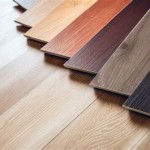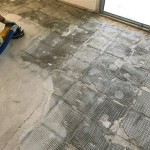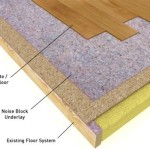How Much Does A Tile Floor Cost To Have Installed?
Installing a tile floor can significantly enhance a home's aesthetic appeal and functionality. However, understanding the various factors influencing the overall cost is crucial for budgeting and planning purposes. This article provides a detailed breakdown of the expenses associated with professional tile floor installation, encompassing materials, labor, and other potential cost contributors.
The total cost of tile floor installation is not a fixed figure; it fluctuates depending on the type of tile chosen, the size of the area to be covered, the complexity of the installation, the condition of the subfloor, and the geographic location of the project. A comprehensive assessment of these factors is necessary to arrive at a realistic cost estimate. Furthermore, homeowners should consider potential hidden expenses, such as subfloor repairs or unexpected issues encountered during the installation process.
Key Cost Drivers in Tile Floor Installation
Several key elements directly impact the price of tile floor installation. Understanding these drivers is critical for homeowners seeking to manage their budgets effectively. The factors discussed below represent some of the most significant influences on the overall expense.
The most fundamental cost factor is the price of the tile itself. Tile prices vary considerably depending on the material (ceramic, porcelain, natural stone, glass), size, design, and manufacturer. Ceramic tiles are generally the most affordable option, while natural stone tiles, such as marble or granite, tend to be the most expensive. Porcelain tiles, offering a balance of durability and aesthetics, often fall in the mid-range price bracket. The size of the tile can also influence the price, with larger tiles often costing more per square foot than smaller ones, although they might require less labor to install.
Labor costs represent a substantial portion of the overall installation expense. The complexity of the tile pattern, the size of the installation area, and the geographic location all affect labor rates. Intricate patterns, such as herringbone or mosaic designs, require more time and skill, leading to higher labor charges. Larger areas might benefit from economies of scale, reducing the per-square-foot labor cost, but the total labor expense will still be higher due to the increased work volume. Geographic location plays a role because labor rates vary significantly across different regions, with higher costs typically observed in metropolitan areas.
The condition of the subfloor is another critical determinant of the overall cost. A level and stable subfloor is essential for a successful tile installation. If the existing subfloor is uneven, damaged, or structurally unsound, it may require repairs or replacement before the tile can be installed. Subfloor preparation can involve leveling compounds, patching cracks, reinforcing joists, or even replacing the entire subfloor. These repairs add significantly to the overall cost. It is also important to consider whether the existing subfloor is appropriate for the type of tile being installed. For example, natural stone tiles are heavier and may require a strengthened subfloor to prevent cracking or sagging.
The type of grout chosen also adds to the cost. Grout is used to fill the spaces between the tiles, providing a water-resistant seal and contributing to the overall aesthetic appeal. Different types of grout, such as cement-based grout, epoxy grout, and urethane grout, have varying costs and performance characteristics. Epoxy grout, known for its stain resistance and durability, is generally more expensive than cement-based grout. The choice of grout color can also impact the overall look of the tile floor.
Average Cost Breakdown: Materials and Labor
Understanding the typical cost breakdown between materials and labor can provide a clearer picture of the overall investment. While specific percentages will vary depending on the project's unique characteristics, a general estimate can serve as a useful benchmark.
Materials typically account for approximately 30% to 50% of the total cost. This category includes the tiles themselves, grout, thin-set mortar (the adhesive used to bond the tiles to the subfloor), sealant, and any necessary underlayment or membranes. The price of the tiles will be the most significant component of the materials cost. The quality and quantity of other materials, such as thin-set mortar and grout, should not be overlooked, as they play a crucial role in the longevity and performance of the tile floor.
Labor costs typically represent 50% to 70% of the total expense. This includes the cost of removing the existing flooring (if applicable), preparing the subfloor, laying the tiles, applying the grout, and cleaning up the work area. As previously mentioned, labor rates are influenced by the complexity of the installation and the geographic location. It is essential to obtain multiple quotes from reputable tile installers to ensure a competitive price and qualified workmanship.
The cost of removing the existing flooring can vary widely depending on the type of flooring and the ease of removal. For example, removing old vinyl flooring might be relatively straightforward, while removing ceramic tile that is firmly bonded to the subfloor can be more time-consuming and expensive. If the existing flooring contains asbestos, it may be necessary to hire a specialized abatement company to handle the removal process safely and legally, which will significantly increase the cost.
Additional Cost Considerations
Beyond the core materials and labor, several other factors can influence the overall cost of tile floor installation. Awareness of these potential expenses can help prevent unexpected budget overruns.
Permits may be required for tile floor installation, especially if the project involves structural modifications to the subfloor or significant alterations to the existing plumbing or electrical systems. Building codes and permit requirements vary by municipality, so it is essential to check with the local building department to determine if a permit is needed. Failure to obtain necessary permits can result in fines and delays.
Unexpected issues encountered during the installation process can also add to the cost. These might include hidden damage to the subfloor, the need for additional leveling or reinforcement, or the discovery of asbestos or other hazardous materials. It is prudent to set aside a contingency fund to cover these unforeseen expenses. A general rule of thumb is to allocate 10% to 15% of the estimated cost as a contingency.
The cost of moving furniture and appliances out of the work area can also be a factor. Some tile installers include this service in their labor costs, while others charge an additional fee. If you are handling the moving of furniture yourself, be sure to protect your belongings and the surrounding areas from damage.
Disposal fees for the old flooring and construction debris can also contribute to the overall cost. Many tile installers include debris removal in their services, but it is essential to clarify this upfront. If you are responsible for disposing of the debris yourself, be aware of local regulations regarding waste disposal and recycling.
Finally, consider the cost of any necessary tools or equipment if you plan to undertake any portion of the installation yourself. While attempting to save money by handling certain tasks can be tempting, it is important to have the appropriate tools and expertise to ensure a successful outcome. Renting specialized tools, such as a tile saw or grout float, can be a cost-effective alternative to purchasing them outright.
By carefully considering all these factors, homeowners can develop a more accurate estimate of the cost of tile floor installation and avoid unexpected expenses.

Tile Flooring Installation Cost Floor S Fixr

Ceramic Tile Flooring Installation Cost Fixr

What Is The Average Cost To Install Tile Floors Rubi Blog Usa

How Much Does Tile Installation Cost 2025 Guide

Ceramic Tile Flooring Installation Cost Fixr

Tile Flooring Installation Cost Floor S Fixr

How Much Does Tile Installation Cost 2025 Guide

What Is The Average Cost Of Wood Tile Flooring

Floor Replacement Cost To Refloor A House Fixr

Ceramic Tile Flooring Installation Cost Fixr
See Also







